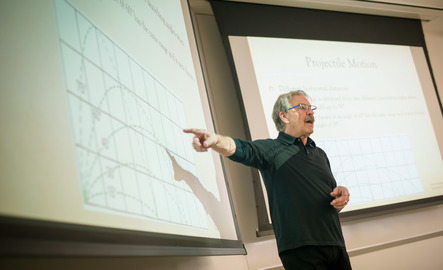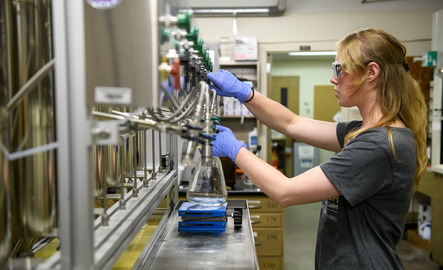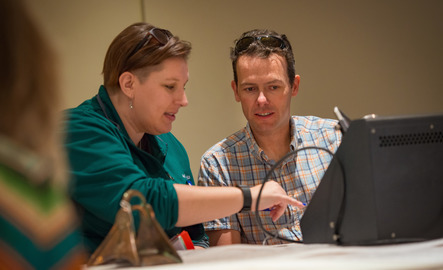About the M.S.T. and M.S. in Physics
Both physics programs train students to excel in a variety of professional roles in
physics-related fields. M.S. students can choose to focus their research and coursework
in their areas of interest, including condensed matter physics, astrophysics, quantum
physics or any other specialized field. This program also offers concentrations in
both experimental and theoretical physics. Applicants for the M.S. program may choose
a thesis or non-thesis track.
The M.S.T. program is specifically designed for graduate students preparing to teach
in secondary schools or community colleges. Students take rigorous physics coursework
while learning the fundamentals of education and psychology. The program additionally
includes a teaching component in which students work as a teaching assistant.

Here is just a sampling of some of the courses you can take while a University of Wyoming physics master's student:
- Astronomical Techniques
- Physics of Solar Cells
- Galactic Structure and Evolution: Cosmology
- Condensed Matter Physics
- Quantum Information Science
View the full master of science in physics degree program curriculum.
View the full master of science in teaching physics degree program curriculum.

In addition to UW’s standard admission process, additional requirements vary based
on your chosen program and track. The M.S.T. program may require applicants to demonstrate
a commitment to teaching through relevant experiences or coursework in education.
Some UW graduate programs also require applicants to submit a statement of purpose
outlining their career goals and research interests as well as letters of recommendation.
Carefully review our admissions website for more information.

What can you do with a master’s degree in physics?
A master’s degree in physics opens the door to advanced careers in research, technology and applied science. Graduates often work as research scientists, data analysts, engineers, software developers or lab technicians in fields like aerospace, defense, energy and tech. Some go on to become medical physicists or college-level instructors, while others use the degree as a stepping stone to Ph.D. programs or interdisciplinary fields such as materials science, data science or engineering. This degree is ideal for students looking to deepen their understanding of physics while gaining practical skills for high-impact careers.
Here are just a few of the job titles our recent graduates pursued:
- Professor
- Physics Teacher
- Assistant Laboratory Coordinator
- Semiconductor Engineer
- Industrial Engineer
Notable M.S. in Physics alumni employers include:
- Quinsigamond Community College
- University of Wyoming
- Mathnasium
- SciTec, Inc.
Industries that commonly seek graduates with physics degrees include:
- Aerospace and defense
- Technology and software development
- Energy and utilities (including renewable energy)
- Semiconductors and electronics
- Healthcare and medical technology
- Finance and data science
- Education and academia
- Telecommunications
- Government research labs and national agencies
- Manufacturing and materials science
These industries value the analytical thinking, problem-solving and quantitative skills that physics graduates bring to complex, technical roles.
A master’s degree in physics typically takes 2 years of full-time study to complete.
Cutting-Edge Research. Personalized Education.
Curious about a career that lets you explore the universe—or unlock the secrets of matter and technology here on Earth? The University of Wyoming’s Department of Physics and Astronomy offers a hands-on, interdisciplinary experience that prepares graduate students for impactful careers in science, technology and beyond. With access to cutting-edge research in condensed matter physics, materials science and astronomy—as well as powerful tools like WIRO, the NCAR supercomputer and state-of-the-art labs—you’ll be immersed in discovery from day one.

